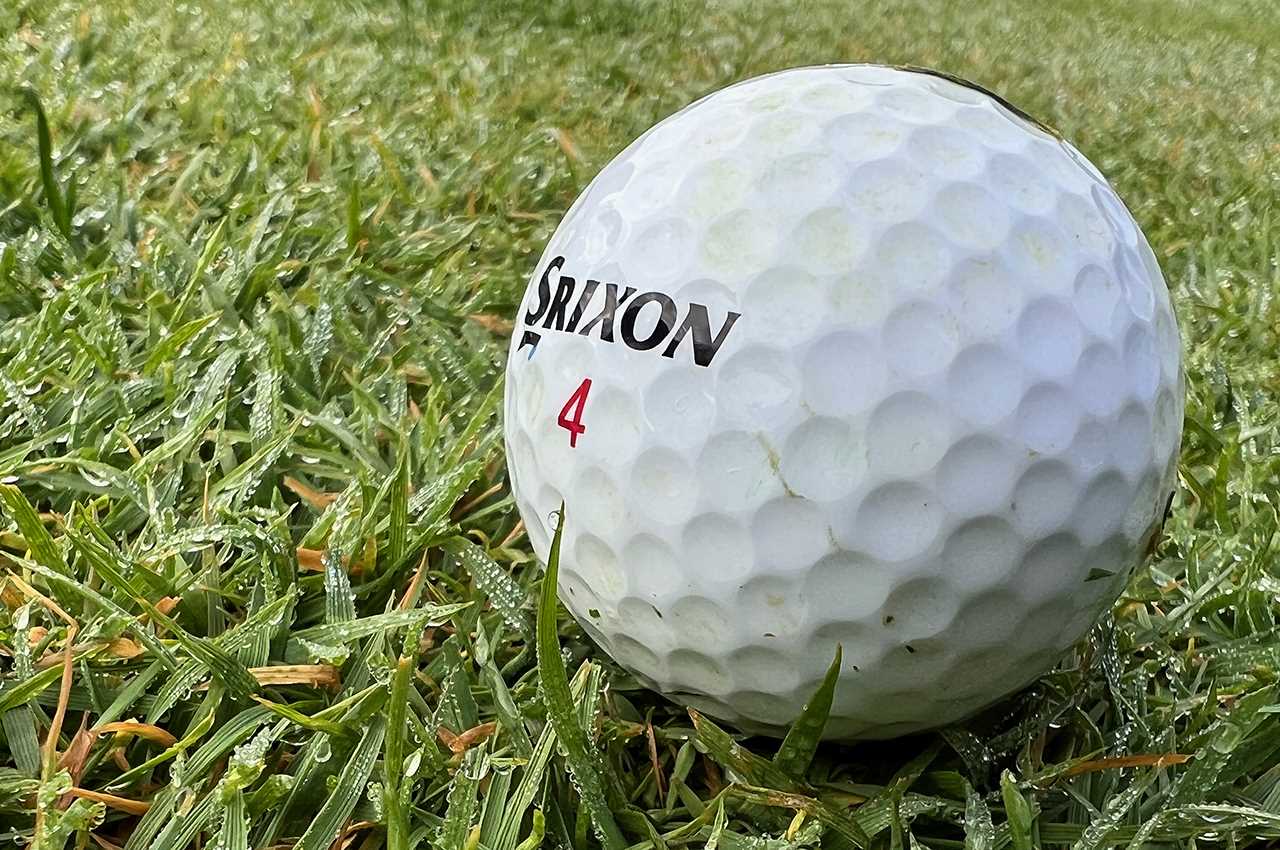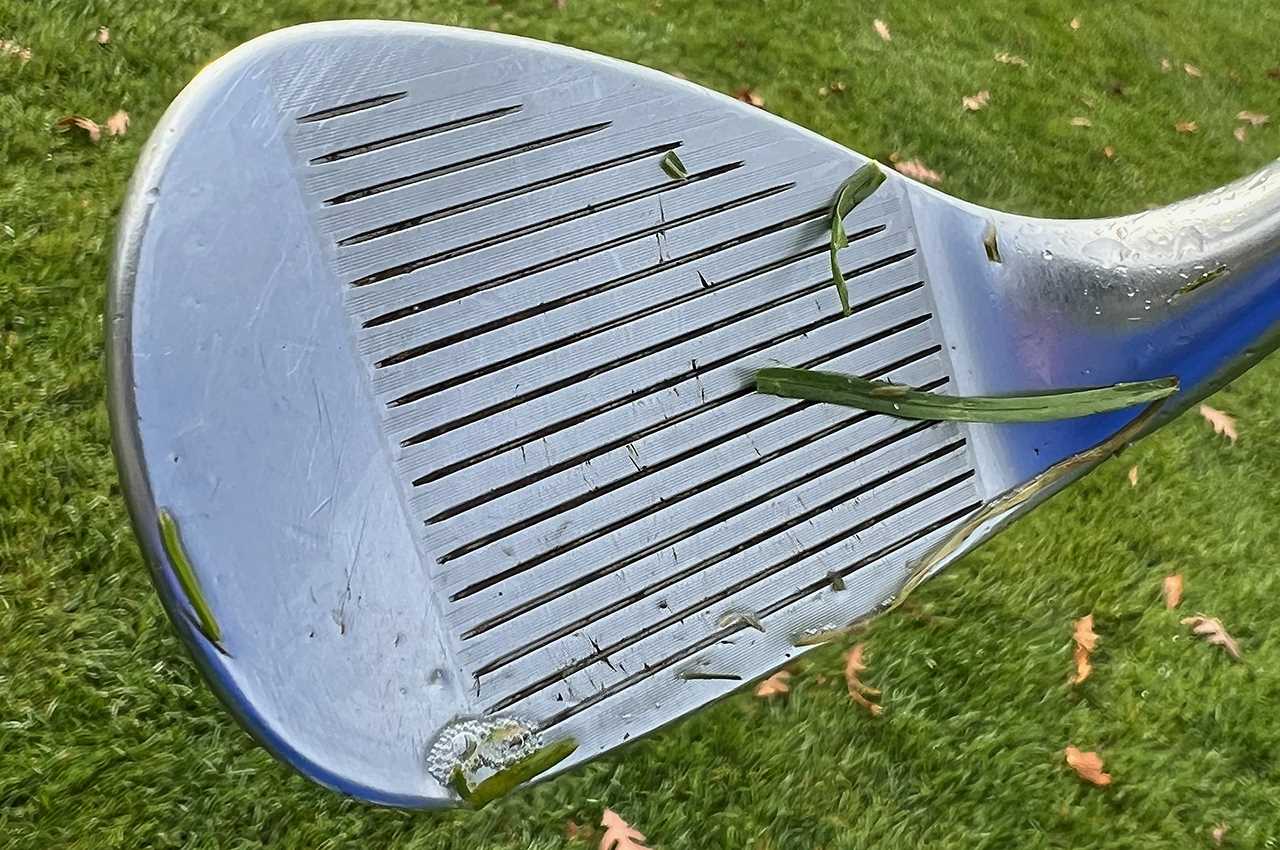Autumn foliage can make late-season golf in the Northeast, Mid-Atlantic and Midwest areas of the United States spectacular, but cool days and damp conditions can make venues that were firm and fast during the summer play differently in October and November. Instead of worrying about the heat and humidity, golfers must contend with chilly conditions, morning dew that can linger for hours and soft, mushy turf that never dries out.
On the positive side, wet conditions can make it easier to hit the fairway because drives tend to stop faster after they land.
On the downside, moisture can play havoc with your short game.
To understand why, think of the grooves in your wedges as tires and pretend that your golf ball is the road. When your tires and the road are dry, you get plenty of traction and grip, which means you can drive under control. But if the road is wet and your tires can’t handle the volume of water you are driving over, they lose grip and your car can skid.
In dry conditions, the grooves of your wedges can grab the cover material of your golf ball and produce lots of spin to enhance control and stopping power. But when grass, the ball or the face of your wedge is wet, the grooves can’t grab the ball as efficiently, so it slides up the face of your wedge at impact. The result is a shot that pops up with a higher launch angle but significantly less spin, making it less predictable and controllable.

When the grass and golf ball are wet, wedges can’t grip the ball as easily or produce as much spin. (David Dusek/Golfweek)
Greg Cesario, a wedge designer at TaylorMade, noted that turf interaction in damp conditions is also critical.
“What golfers need to do is to learn how to ‘pick’ the ball in these types of conditions to keep the ground interaction to a minimum and to keep ball contact as low as possible on the face,” Cesario said. “This will avoid the dreaded ‘climb up the face’ shot with no spin.”
Roger Cleveland, Callaway’s chief designer and long-time wedge expert, said, “It depends on the shot, whether you are in the fairway or the rough, but either way, there is more resistance in ground when it is wet. That’s why you need to be sure to have enough bounce, so the club can work through the ground without digging.”
Jacob Clarke, a design engineer at Ping specializing in wedges, echos Cesario and Cleveland.
“When it’s wet, the friction on the face changes and the spin optimization changes, there’s no doubt about that,” Clarke said. He added that accomplished golfers often compensate by playing shots in wet conditions further back in their stance, and with a steeper swing, to ensure ball-first contact.
If you are looking for more tips and help on how to hit shots from wet, soft lies, Dan Grieve, the head professional at Woburn Golf Club in England, recently produced a fantastic YouTube instruction video on how to hit short-game shots in wet conditions.

Golf club makers are constantly trying to improve ways of getting water, grass and debris off the face to help golfers retain spin. (David Dusek/Golfweek)
Now that you understand how water can ruin your short game, you can grasp why equipment makers invest significant time and money into researching different types of grooves, microgrooves and surface roughening treatments. In dry conditions, generating spin with a 56-degree or 60-degree wedge from the fairway is easy, but maintaining high spin rates in wet rough and damp fairways is hard. Any feature or technology that can channel water off the hitting surface or minimize spin loss in wet conditions will translate to more control.
As for equipment, there are a few things to keep in mind when it comes to playing in damp, cool conditions:
1. Fresh grooves are a must. If you play often (three or four times a month) and your sand wedge and lob wedge are more than two seasons old, those old grooves will struggle to produce spin on wet courses. If you want to prolong your season but have old wedges, invest in new wedges.
2. Have bounce options. Moisture can compress sand in bunkers, and when that happens, high-bounce wedges can skip off the compacted sand and make solid contact challenging. But in damp rough and fairways, low-bounce wedges dig into the turf. Give yourself options by making the bounce in your sand wedge and lob wedge different, with one beinbg be a low-bounce club and the other a high-bounce club. Pick either combination that you like, but give yourself options.
3. Try using less loft. While it may seem counterintuitive, Clarke said that wedges with less loft, like a gap wedge, can often generate more spin on greenside pitch shots in wet conditions than sand or lob wedges. Why? The ball will slide up the face less on a club with 50 or 52 degrees of loft, so the grooves can grab the ball more effectively. A gap-wedge pitch shot will come off on a lower trajectory, but the combination of the retained spin and the soft green can make the shot a smart option.
Below are several excellent wedges you will find in pro shops that have technologies designed to help golfers handle wet and soft conditions more effectively.
https://golfweek.usatoday.com/lists/short-game-wet-soft-conditions-wedges-to-help/
 Backyard GrillingWeekend WarriorsAdvice from DadBeard GroomingTV Shows for Guys4x4 Off-Road CarsMens FashionSports NewsAncient Archeology World NewsPrivacy PolicyTerms And Conditions
Backyard GrillingWeekend WarriorsAdvice from DadBeard GroomingTV Shows for Guys4x4 Off-Road CarsMens FashionSports NewsAncient Archeology World NewsPrivacy PolicyTerms And Conditions
